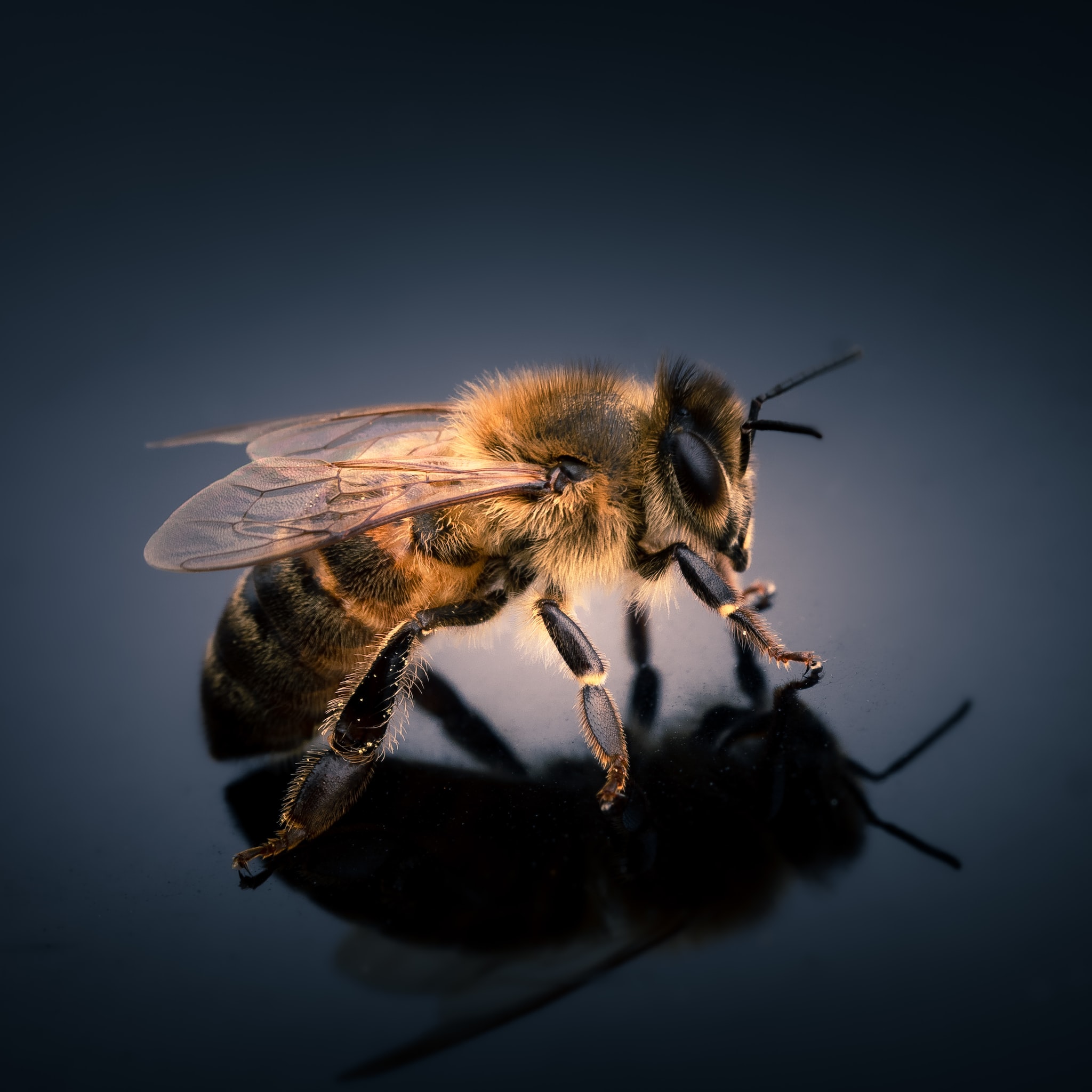
Honey Bee
Scientific Name: Genus: Apis
Fun Fact: It takes one ounce of honey to fuel a bee’s flight around the world.
Lifespan: The lifespan of a honey bee depends on the type of bee it is. Drone bees (male bees hatched from unfertilized eggs) live for around eight weeks. Sterile worker bees tend to live for up to six weeks during summer and five months or more during winter. However, the queen bee, the only fertile bee in the colony, can live for several years.
Description
A honey bee (or honeybee) is a social, flying insect within the genus Apis. They are known for construction of perennial, colonial nests from wax, for the large size of their colonies, and for their surplus production and storage of honey, distinguishing their hives as a prized foraging target of many animals, including honey badgers, bears and human hunter-gatherers.
The best known honey bee is the Western honey bee which has been domesticated for honey production and crop pollination. Modern humans also value the wax for candle making and other crafts. Honey bees represent only a small fraction of the roughly 20,000 known species of bees. Some other types of related bees produce and store honey and have been kept by humans for that purpose, including the stingless honey bees, but only members of the genus Apis are true honey bees. The study of bees, which includes the study of honey bees, is known as melittology.
Life Cycle
Colonies generally contains one queen bee, a fertile female, up to a few thousand drone bees, or fertile males and tens of thousands of sterile female worker bees.
Eggs are laid singly in a cell in a wax honeycomb, produced and shaped by the worker bees. The queen can choose to fertilize the egg she is laying, usually depending on into which cell she is laying. Drones develop from unfertilised eggs while females (queens and worker bees) develop from fertilized eggs and are diploid. Larvae are initially fed with royal jelly produced by worker bees, later switching to honey and pollen. The exception is a larva fed solely on royal jelly, which will develop into a queen bee. The larva undergoes several molting’s before spinning a cocoon within the cell, and pupating.
Males, or drones primarily exist for the purpose of reproduction. Workers bees are produced from an egg that the queen has selectively fertilized. Workers typically develop in 21 days. A typical colony may contain as many as 60,000 worker bees.
Queen honey bees are created when worker bees feed a single female larvae an exclusive diet of a food called “royal jelly”. Queens are produced in oversized cells and develop in only 16 days. The sting of queens is not barbed like a worker’s sting, and queens lack the glands that produce beeswax. Once mated, queens may lay up to 2,000 eggs per day. They produce a variety of pheromones that regulate behavior of workers, and helps swarms track the queen’s location during the swarming.
Stings
All honey bees live in colonies where the workers sting intruders as a form of defense, and alarmed bees release a pheromone that stimulates the attack response in other bees. The different species of honey bees are distinguished from all other bee species (and virtually all other Hymenoptera) by the possession of small barbs on the sting, but these barbs are found only in the worker bees.
(706) 221-8000
Have a Question? Call Us!Any critter. Any Insect. Anywhere. Any time.
REQUEST A QUOTE

100% Satisfaction
There is a reason our work is guaranteed…we do it right. If you would ever have a problem with pests while we are in charge of your pest control, we will work until the problem is resolved. Our contracts provide you with quarterly service and we will take care of any problems that may happen to arise between visits.
We Guarantee It!

Request Free Pest Inspection
EMERGENCY SERVICE AVAIALBLE
Request Free Pest Inspection
EMERGENCY SERVICE AVAIALBLE


